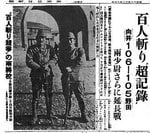I don't think Erich Hartmann would have lasted 10 years in a German "work" camp like he did in the Russian camp system.
In 1943 a concentration camp prisoner had an average life expectancy of from three to nine months. This varied considerably from camp to camp and some prisoners managed to survive for several years.
In the Bunawerke (artificial rubber factory) belonging to I.G. Farben at Monowitz near Auschwitz, the manpower turnover was 300% per year.Not many can have been surviving more than four months.If that camp wasn't designed to kill the workforce it was doing a remarkably good job of it.
The death rate in concentration camps (not extermination camps where it was self evidently close to 100%) rose from about 60% in 1942 to 80% in the succeeding three years.
We'll never know,thankfully,if anyone could have survived for ten years but statistically it is virtually impossible.
History has to be based on facts not opinion and I hope I have entered a few salient facts into this thread.
I really am done with this now!
Cheers
Steve

